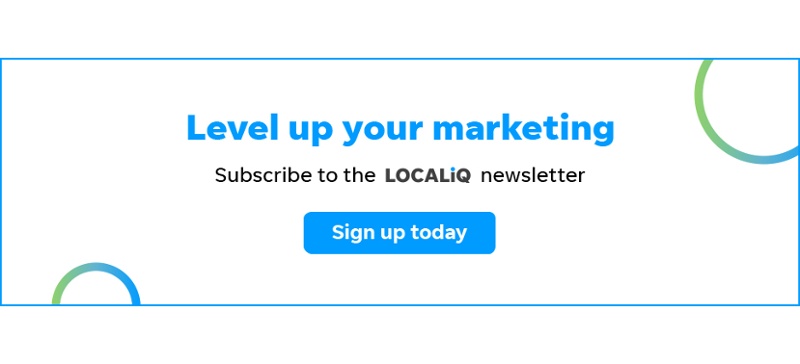Copywriting can be a challenging process; trying to put together the perfect piece of copy that really sells your business and stands out in a crowded marketplace can be tough. But sometimes figuring out how to tailor your writing for your target audience is even harder.
It’s incredibly important that your copy reaches the right readers. A catchy print ad with the perfect headline or a well-written email means nothing if they don’t appeal to your target audience. So how do you reach different audiences with your copy and ensure that the words you’re putting down on paper engage the right people?
The good news is, that there are several steps that you can take to make your copy work harder for your business and connect with the right audience.
Identify your audience
The very first thing that you need to do to write copy that really works for your audience, is to determine exactly who your target audience is. Once you’ve identified who to aim your message at, then you can make sure that you tailor your writing as much as possible to make it really effective and engaging for the right people.
But how exactly do you identify your target audience? Well, thinking about a few specific factors will definitely help. First of all, think more generally about your business. What products and services do you sell? Do you work with other businesses or consumers? What kind of customers do you target and interact with daily? You know your business better than anyone else so you’re bound to have a good idea of your overall customer base. You should then consider if there is a specific section of your customer base that would identify with the particular product or service that you’re writing about.
Once you know your target audience, it’s useful to identify different demographics of people within it. What is their age, gender, education level and job title? What is their lifestyle like? Do they have any relevant hobbies or interests? Where are they located – is it a local or national audience?
Finally, think about where your copy is going to appear and which channel your readers are most likely to use. The kind of audience who will be looking at a print advert in a newspaper is going to be very different to the kind of audience who will see an Instagram advert.
What does your audience already know?
Once you’ve identified who your target audience is, next you need to think about what your audience knows already. It’s common knowledge that people have fairly short attention spans and only want to read things that are interesting or applicable to them. That means you have to really put some effort into placing your writing on your audience’s level. Most of the time, that’s a bit of a balancing act.
Do your readers already have a good background understanding of the topic you’re writing about or are you introducing them to brand new material? Repeating what your audience already knows will cause them to switch off or stop reading completely. Alternatively, if you’re introducing something brand new, you don’t want to confuse your audience or assume they know more than they do.
For example, if you’re a marketing agency writing copy to promote your SEO product, you’d want to consider how much your audience already knows about SEO. If they are completely new to the subject, you’d want to explain more and avoid using too many complex terms, but if your audience is familiar with it already, then you can skip the explanation and dive deeper into the subject.
If you have a good understanding of your audience’s knowledge level ahead of time, then you can find the right balance. Think about what they know already, what they need to know next, and what questions they will have. Then when you start writing, you can make sure you answer those needs and questions effectively.
How familiar are they with you?
It’s important to consider how familiar your audience is with your business or brand. If your target audience already knows who you are and what you do as a business, then you don’t need to repeat that in your copy as it won’t offer the reader anything new.
This also works the other way. If your audience knows nothing about you, it’s best to have a sentence or a paragraph introducing your business or service to establish yourself with the reader. If they’re not familiar with you at all, you need to give them that information to spark their interest and give them an incentive to read on.
Think about it this way, if you’re writing a marketing email that is being sent out to your existing clients, you wouldn’t need to introduce your business as they’ve already worked with you or shopped with you in the past. But if you’re sending an email to prospective customers, you’ll need to introduce yourself before moving on to what you want your reader to do. You wouldn’t approach a stranger and pitch them a product without introducing yourself first.
Use the right language and word choice
Another crucial aspect of writing copy that appeals to your audience is the kind of language and words that you use. Speaking to your audience in a way that they’re familiar with can have a big impact. Your language and word choice should always reflect your brand’s tone of voice as well as the way that your audience speaks and likes to be spoken to in return. Certain kinds of language and even individual words can provoke very different feelings and reactions in readers, even if they mean the same thing in theory. Think about the audience you’re targeting and choose words that will resonate with them.
For example, if you’re targeting a younger audience demographic, you’d use different words and a different style of language compared to if you’re targeting an older demographic. This is because different age groups tend to speak in different ways. Think about whether your words and phrases are suitable for that age range, whether they will understand them and whether they will resonate with them and enjoy them.
This is the same for many other types of audience as well. The language that parents of young children identify with would probably be very different to the language that would appeal to someone who is young and single. Or from a B2B perspective, the type of language you’d use in copy aimed at a small, local business would probably be very different to the language that would suit a larger corporate company.
If you tailor your word choice and language to your audience demographic, they will feel like your copy is written specifically for them and that you are relatable. Of course, you need to be authentic to your brand and write in a way that still feels genuine, but at the end of the day, people like to feel that they can relate to each other and using language that your audience feels comfortable with is a great way of doing that.
Think about what your audience wants and reflect that in your writing
You should also think about how to tailor your copy to the main points your audience will expect and want to get from you.
If you’re a luxury travel brand that targets an affluent audience with a luxury experience, reflect that in your copy. Use language that highlights a bespoke, no expense spared, luxury experience and really paint that picture for your audience. In comparison, if you’re a holiday company that sells package holiday deals, you’d want to emphasise your amazing deals, great value and opportunities to save money on excellent holidays, as that’s what your target audience is looking for from you and what really matters to them.
Look for the specific features that your target audience wants and expects from you and then emphasise those in your words and your messages. It doesn’t always have to be obvious; it could just be a very subtle word choice. But it will definitely help the right readers to view your brand as the one that they’re looking for.
Make it about them and not you
If you truly want to tailor your copywriting to your target audience, they need to be the main focus. Many businesses often make the mistake of just writing about themselves and listing all of the reasons why their products and services are excellent. While it’s great that your products and services are excellent, your audience doesn’t care about that unless it’s beneficial to them.
Your reader should always be at the forefront of your copy. So instead of writing ‘we are experts in digital marketing’, write ‘our digital marketing expertise can help you grow your business and see real results in no time at all.’ The second option is focused on the reader and shows why it matters to them, rather than just saying that you’re knowledgeable.
When you’re writing any form of copy, ask yourself: ‘so what?’ Why would the reader care about this? Why would this sentence really matter to your audience and why should they be interested in reading more? It’s not about why it’s good for you as a business, it’s why it’s good for your audience that really counts.
Another way that you can instantly make your copy about your reader is by using personal language. This is simply a case of using words such as ‘you’ and ‘your’ in your writing. This makes the reader feel like you’re speaking directly to them and builds more of a connection between your business and your audience.
Make the reader feel positive
It’s safe to say that nobody wants to feel bad about themselves and this is also true with copy. If a piece of copy is focusing on everything that is wrong with a reader and all of the issues that they’re facing, that’s not going to make the reader feel very good and is likely to alienate them. That means they’re not going to associate your business with a positive experience and they’re probably not going to become a customer in future. You obviously want to avoid this.
The power of positivity shouldn’t be underestimated in copywriting as it can play a really important part in helping you to reach the right readers and form the right kind of connection with them from the outset.
Instead of writing extensively about the issues and negative aspects, focus on solutions and what people can gain. By all means, make a quick mention of the problem that your readers need help with or the pain point that they might be experiencing, but don’t dwell on them. Your goal isn’t to make the reader feel bad about themselves. Move quickly onto the benefits and make the reader feel good about what you can offer them and most importantly, what they can accomplish with you. Try saying ‘You will achieve this’ not ‘you’re struggling and you can’t do it’.
Don’t switch between audiences
Finally, make sure you’re not switching between audiences throughout your copy. In the vast majority of cases, once you know who your audience is, you’re going to be writing for just that one audience in that one piece of copy.
It can be easy to find yourself drifting between audiences in certain cases, and sometimes even just one stray word choice can make your copy feel like you’re talking to someone completely different. For example, if you were promoting entries for an awards event that you’re running, asking people to ‘nominate’ would sound very different to asking people to ‘enter’.
To make sure you’re sticking to the correct audience throughout your copy, it’s simply just a case of remembering to check on yourself as you go. Read through your copy multiple times and make sure it’s consistent all the way through. You could also ask a colleague to read it for you, as that will give you a fresh perspective. If it doesn’t feel like your audience is defined enough or it feels muddled to read, go back and make some edits, it will be worth the extra time and effort in the end.
Copywriting is never going to be an exact science, but making sure that you identify your audience in as much depth as possible and thinking about what they will already know before you start writing will set you off on the right foot. Then just be creative – ensure that you use language and words that your audience will relate to and focus on making your copy personable and highlight the benefits that they will want to see from you. All of this will contribute towards a strong connection with your reader and a positive association with your brand.






